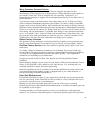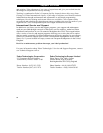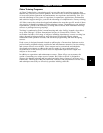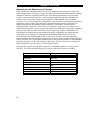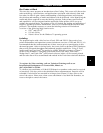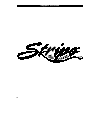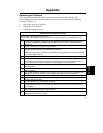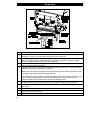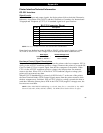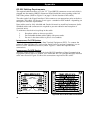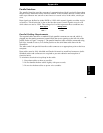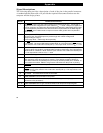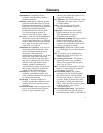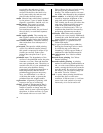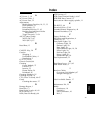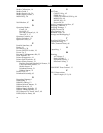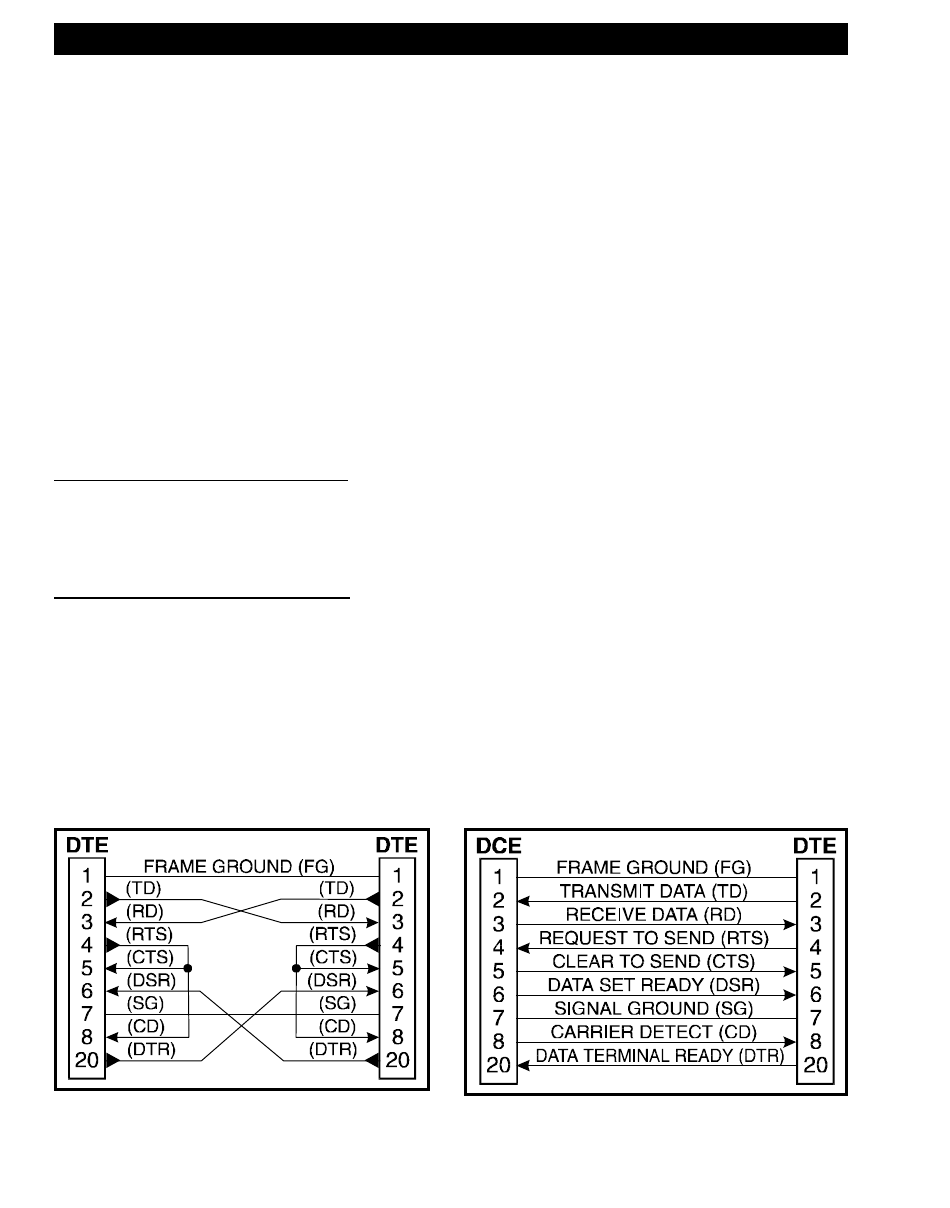
RS-232 Cabling Requirements
The required cable must have a 25-pin “D” Type (DB25P) connector on one end, which is
plugged into the mating (DB25S) connector located inside the access opening on the left
side of the printer. (Refer to Figure 11 on page 19 for the location of this cable.)
The other end of the Signal Interface Cable connects to an appropriate point at the host
computer. This cable will be one of two types–standard or null modem–depending on
the specific interface requirements.
Data cables must be fully shielded and fitted with metal or metallized connector shells.
Shielded cables and connectors are required to prevent radiation and reception of
electrical noise.
To minimize electrical noise pickup in the cable:
1. Keep data cables as short as possible.
2. Do not bundle the data cables tightly with power cords.
3. Do not tie the data cables to power wire conduits.
Interconnect To DTE Devices
The Stripe printer is configured as Data Terminal Equipment (DTE). To connect the
printer to other DTE devices (such as the Serial Port of a personal computer), use an
RS-232 NULL MODEM (crossover) cable. Figure 37 shows the required cable
connections.
Interconnect To DCE Devices
When the Stripe printer is connected via its RS-232 interface to Data Communication
Equipment (DCE) such as a modem, a STANDARD RS-232 (straight-through) interface
cable must be used. Figure 38 shows the connections required for this cable.
Figure 37 DTE to DTE Cable Connections
Figure 38 DCE to DTE Cable Connections
Appendix
66



